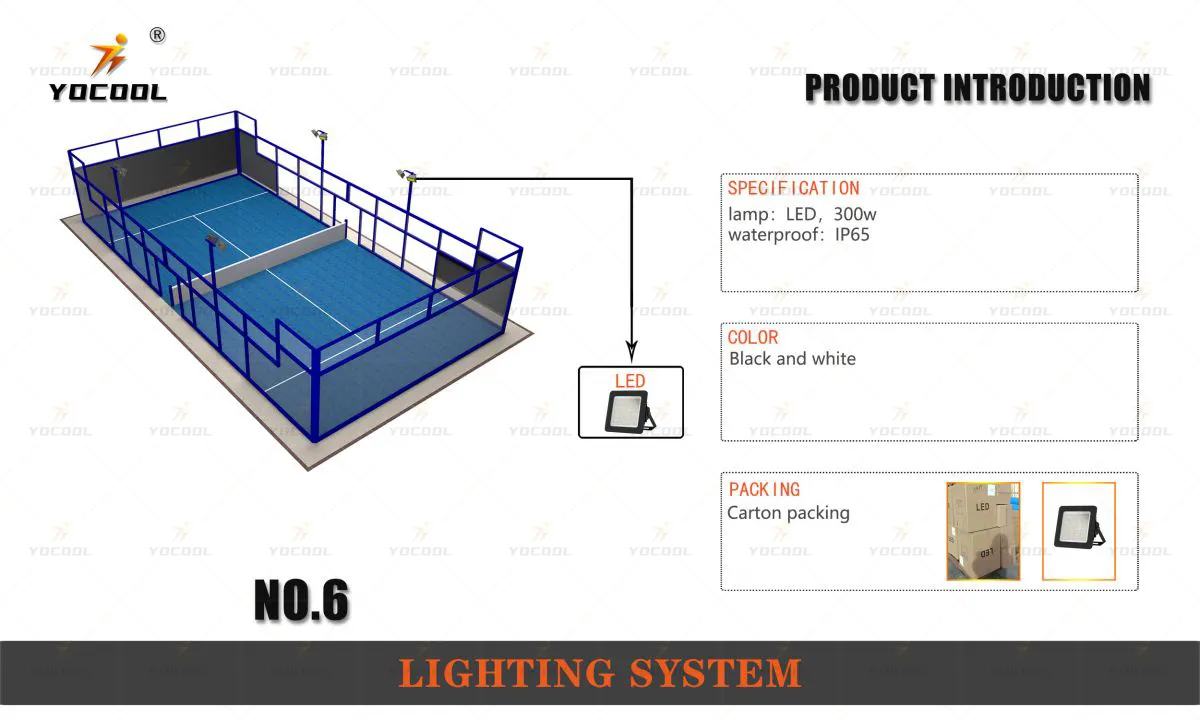

Building a Padel Court A Comprehensive Guide
Padel, a sport that combines elements of tennis and squash, has gained immense popularity across various countries. Its unique format offers a fun and engaging experience for players of all ages and skill levels. If you’re considering building a padel court, this article will guide you through the essential steps, from planning and design to construction and maintenance.
Understanding Padel
Before diving into the construction process, it’s important to understand the game. Padel is typically played in doubles on an enclosed court about one-third the size of a traditional tennis court. The court is surrounded by glass and wire mesh, allowing for visibility and playability. One of the key elements of padel is its accessibility; people of all ages can enjoy the game, making it a great community sport.
Planning Your Padel Court
1. Choosing the Location The first step in building a padel court is selecting the right location. It should be easily accessible, preferably near recreational facilities or even within residential communities. Ensure the chosen site has adequate space—measuring approximately 20 meters long and 10 meters wide—plus additional space around the court for safety and spectator areas.
2. Local Regulations and Permitting Research local zoning laws and building regulations. You will likely need permits to construct a padel court. Contact your local government office to ensure compliance with all necessary guidelines.
3. Budgeting Establishing a budget is critical. Costs can vary significantly based on materials, labor, and additional features such as lighting and fencing. A basic budget outline should include
- Court Construction The surface, walls, and netting. - Lighting Essential for evening play. - Amenities Seating, changing rooms, and restroom facilities if desired. - Landscaping Surrounding the court with greenery can enhance aesthetics.
Design Considerations
1. Court Surface The playing surface of a padel court is usually made from synthetic turf, concrete, or asphalt. While synthetic turf provides optimal playability and comfort, concrete is durable and often requires less maintenance. Choose the surface type based on factors such as climate and usage frequency.

2. Walls and Fencing Padel courts typically feature walls made of glass, allowing players to hit the ball off them similarly to squash. Proper wall height is essential for gameplay, with standard sizes being around 3 to 4 meters. Surround the court with fencing for safety and to keep the ball in play.
3. Lighting If you plan to play during the evening, ensure the court is equipped with adequate lighting. High-quality LED lights can provide even illumination without excessive glare.
Construction Process
Once you have your design and permits in place, the construction process can begin. It typically involves
- Excavation Preparing the ground by digging out the area for the base. - Base Layer Installing a solid base layer, often with crushed stone or similar materials for drainage. - Surfacing Applying the chosen surface material, ensuring it is level and secure. - Installing Walls and Fencing Constructing the glass walls and installing fencing around the court. - Final Touches Adding nets, installing lights, and ensuring proper drainage systems are in place.
Maintenance of Your Padel Court
Maintaining your padel court is crucial for its longevity and playability. Regular maintenance includes
- Cleaning the Surface Sweep and clean the court regularly to prevent debris buildup. - Inspecting the Fencing and Walls Look for any damage or wear, addressing repairs promptly. - Checking Lighting Ensure lights are functioning properly, replacing bulbs as needed.
Conclusion
Building a padel court is an exciting venture that can foster community engagement and promote an active lifestyle. With careful planning, thoughtful design, and regular maintenance, your padel court can become a hub for social gatherings and athletic competition. The game of padel is not just about scoring points; it’s about making memories, building friendships, and enjoying the thrill of the sport!
High-Performance Industrial Flooring Solutions China Paddle Tennis Court for Sale
High-Performance Industrial Flooring Solutions Durable & Cost-Effective
Homogeneous Transparent Floor – Durable & Stylish Rubber Floor Solutions
Premium Homogeneous Transparent Floor for Durable & Stylish Spaces Rubber Floor Solutions
Premium Sports Floor Solutions Durable PVC Sports Floor & Rubber Floor for Gyms
Durable Rubber Composite Floor Premium Rubber Floor & Mats Solutions